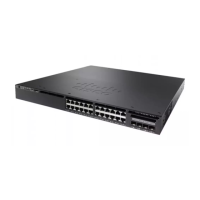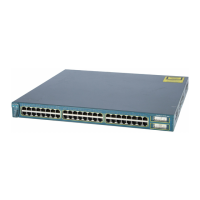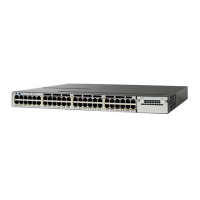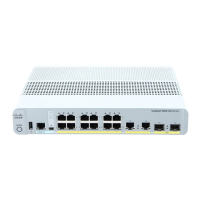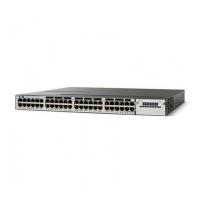•
Protocol Independent Multicast (PIM), Dense Mode Protocol Specification
•
Protocol Independent Multicast (PIM), Sparse Mode Protocol Specification
•
draft-ietf-idmr-igmp-v2-06.txt, Internet Group Management Protocol, Version 2
•
draft-ietf-pim-v2-dm-03.txt, PIM Version 2 Dense Mode
PIM Versions
PIMv2 includes these improvements over PIMv1:
•
A single, active rendezvous point (RP) exists per multicast group, with multiple backup RPs. This single
RP compares to multiple active RPs for the same group in PIMv1.
•
A bootstrap router (BSR) provides a fault-tolerant, automated RP discovery and distribution function
that enables routers and multilayer devices to dynamically learn the group-to-RP mappings.
•
Sparse mode and dense mode are properties of a group, as opposed to an interface.
We strongly recommend using sparse-dense mode as opposed to either sparse mode or
dense mode only.
Note
•
PIM join and prune messages have more flexible encoding for multiple address families.
•
A more flexible hello packet format replaces the query packet to encode current and future capability
options.
•
Register messages sent to an RP specify whether they are sent by a border router or a designated router.
•
PIM packets are no longer inside IGMP packets; they are standalone packets.
PIMv1 and PIMv2 Interoperability
To avoid misconfiguring multicast routing on your device, review the information in this section.
The Cisco PIMv2 implementation provides interoperability and transition between Version 1 and Version 2,
although there might be some minor problems.
You can upgrade to PIMv2 incrementally. PIM Versions 1 and 2 can be configured on different routers and
multilayer devices within one network. Internally, all routers and multilayer devices on a shared media network
must run the same PIM version. Therefore, if a PIMv2 device detects a PIMv1 device, the Version 2 device
downgrades itself to Version 1 until all Version 1 devices have been shut down or upgraded.
PIMv2 uses the BSR to discover and announce RP-set information for each group prefix to all the routers and
multilayer devices in a PIM domain. PIMv1, together with the Auto-RP feature, can perform the same tasks
as the PIMv2 BSR. However, Auto-RP is a standalone protocol, separate from PIMv1, and is a proprietary
Cisco protocol. PIMv2 is a standards track protocol in the IETF.
IP Multicast Routing Configuration Guide, Cisco IOS XE Release 3SE (Catalyst 3650 Switches)
114 OL-29890-01
Configuring PIM
PIM Versions
